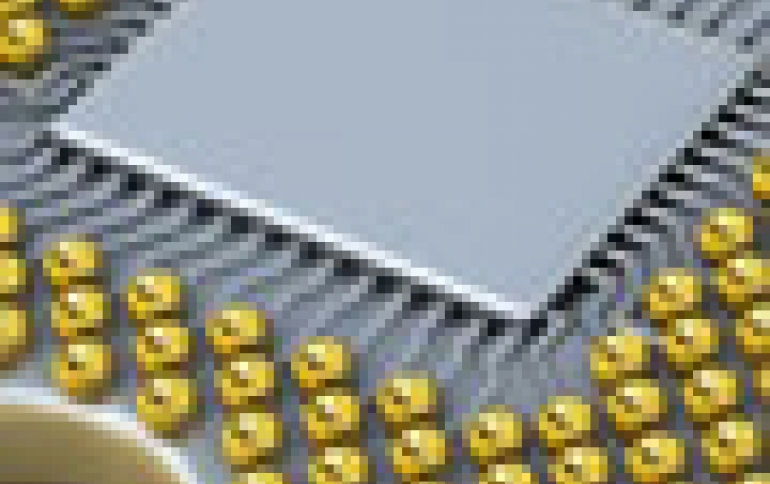
Europe Proposes New Investment Plan To Advance Chip Making
The European Commission today launches a campaign for coordinated public investments in micro- and nano-electronics (such as semiconductors and computer chips), designed to expand Europe's manufacturing base.
European Commission Vice President Neelie Kroes says "Others are aggressively investing in computer chips and Europe cannot be left behind. We have to reinforce and connect our existing strongholds and develop new strengths. A rapid and strong coordination of public investment at EU, Member State and regional level is needed to ensure that transformation."
Neelie Kroes said: "I want to double our chip production to around 20% of global production. I want Europe to produce more chips in Europe than the United States produces domestically. It's a realistic goal if we channel our investments properly."
Europe's industrial strategy includes higher and more coordinated investments in R&D&I - maximising the impact of EU and member state investments through greater cross-border collaboration (70% of public investment is expected to come from member states, 30% from EU).
The plan also includes efforts to reinforce Europe's three world-class electronics clusters: Dresden (DE), Eindhoven (NL) /Leuven (BE), and Grenoble (FR) and connecting with other leading edge European clusters such as in Cambridge (UK), Carinthia (AT), Dublin (IRL) and Milan (IT). Chipmakers Infineon, ASML, Intel, ARM, STMicroelectronics and NXP are among the companies that could stand to benefit from the increased research support.
The strategy will focus on three complementary lines: making chips cheaper (transitioning to 450mm-sized silicon wafers, the raw material for the chips), making chips faster ("More Moore") and making chips smarter ("More than Moore").
Europe will also be mobilising 10 billion of private, regional, national and EU funds, behind a common set of research and innovation goals, including €5 billion through a joint Public-Private Partnership. This seven-year partnership is designed to cover the whole value and innovation chain in the electronics sector, including funding large-scale innovation projects, under the EU's Horizon 2020 research programme.
Neelie Kroes added: "With this strategy European industry will be better placed to convert engineering innovations into commercially deployable technologies."
Successful implementation of this strategy will ensure a greater availability of micro- and nano-electronics to key industries in Europe; an expanded supply chain and eco-system, boosting opportunities for SMEs and; higher investment in advanced manufacturing.
The Commission's level of ambition is backed by researchers and the electronics industry who at the end of 2012 outlined how a total investment of €100 billion could be delivered between 2013 and 2020.
After growth averaging 5% per year since 2000, the European electronics industry today employs 200 000 people directly and supports one million jobs indirectly; there is further unmet demand for skilled workers.
Neelie Kroes said: "I want to double our chip production to around 20% of global production. I want Europe to produce more chips in Europe than the United States produces domestically. It's a realistic goal if we channel our investments properly."
Europe's industrial strategy includes higher and more coordinated investments in R&D&I - maximising the impact of EU and member state investments through greater cross-border collaboration (70% of public investment is expected to come from member states, 30% from EU).
The plan also includes efforts to reinforce Europe's three world-class electronics clusters: Dresden (DE), Eindhoven (NL) /Leuven (BE), and Grenoble (FR) and connecting with other leading edge European clusters such as in Cambridge (UK), Carinthia (AT), Dublin (IRL) and Milan (IT). Chipmakers Infineon, ASML, Intel, ARM, STMicroelectronics and NXP are among the companies that could stand to benefit from the increased research support.
The strategy will focus on three complementary lines: making chips cheaper (transitioning to 450mm-sized silicon wafers, the raw material for the chips), making chips faster ("More Moore") and making chips smarter ("More than Moore").
Europe will also be mobilising 10 billion of private, regional, national and EU funds, behind a common set of research and innovation goals, including €5 billion through a joint Public-Private Partnership. This seven-year partnership is designed to cover the whole value and innovation chain in the electronics sector, including funding large-scale innovation projects, under the EU's Horizon 2020 research programme.
Neelie Kroes added: "With this strategy European industry will be better placed to convert engineering innovations into commercially deployable technologies."
Successful implementation of this strategy will ensure a greater availability of micro- and nano-electronics to key industries in Europe; an expanded supply chain and eco-system, boosting opportunities for SMEs and; higher investment in advanced manufacturing.
The Commission's level of ambition is backed by researchers and the electronics industry who at the end of 2012 outlined how a total investment of €100 billion could be delivered between 2013 and 2020.
After growth averaging 5% per year since 2000, the European electronics industry today employs 200 000 people directly and supports one million jobs indirectly; there is further unmet demand for skilled workers.













